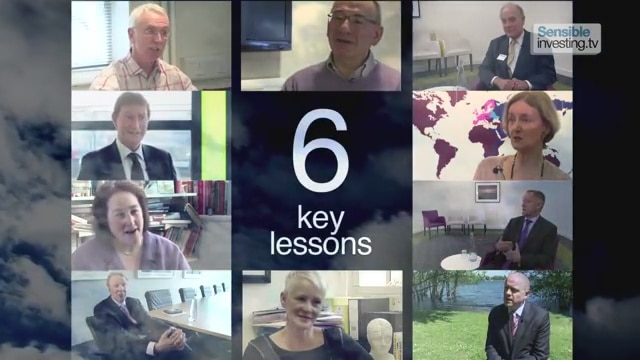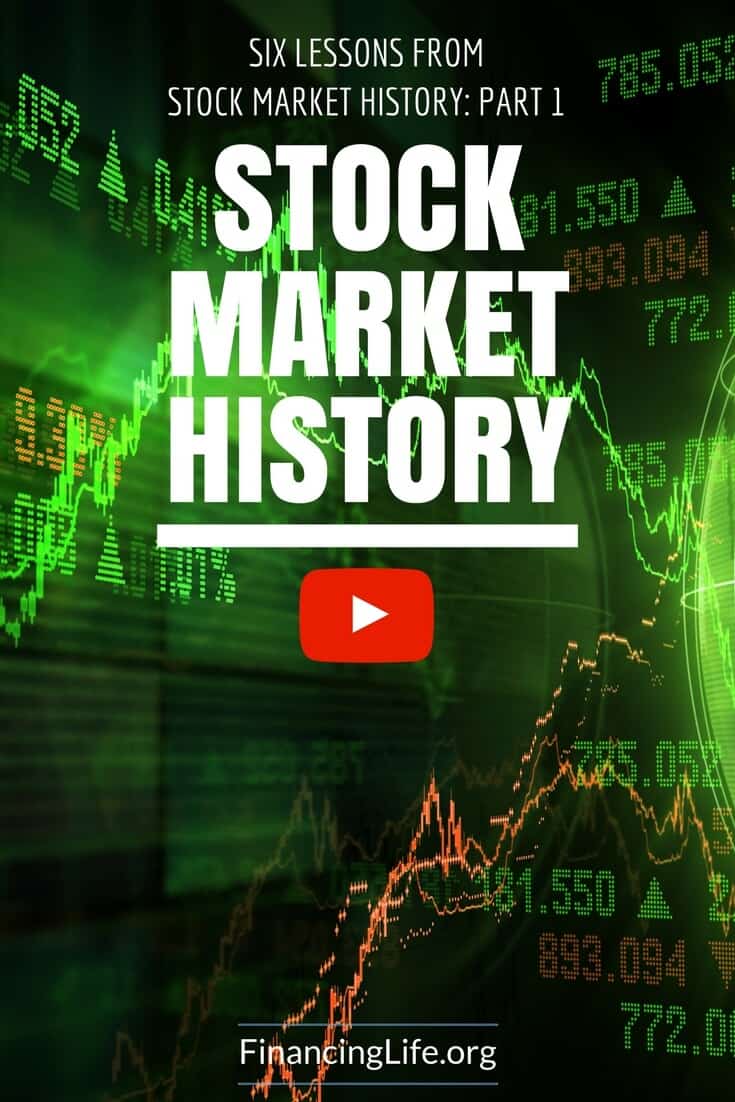This 8-part series about investing in stocks is for beginners who want to learn how to invest. It begins with a brief history of world stock markets because the most important lesson that investors should take from history is that they should learn from history. This outstanding video series was produced by SensibleInvesting.tv. I have created a summary and transcript to help you find spots that interest you and make the best use of your time.
NEXT STEPS: Watch the 8-part series Lessons from Stock Market History
- Part 1: world stock markets (video)
- Part 2: market expectations (video)
- Part 3: market volatility (video)
- Part 4: stock market timing (video)
- Part 5: keep investing simple (video)
- Part 6: diversify stocks (video)
- Part 7: buy and hold (video)
- Part 8: sensible investing (video)
Summary of video: Lessons From Stock Market History Pt.1: world stock markets
SensibleInvesting.tv is an independent voice that makes important educational videos about passive investing—the best I’ve seen. This series features some of the biggest names and brightest minds in the investment world. It is presented and produced by Robin Powell and his team at SensibleInvesting.tv, and published on YouTube. It is a great honor to include it in our collection of video tutorials about “Investing in Stocks”.
Key points about investing in stocks from this video:
- There’s a lot to learn from history to avoid being influenced by the recent past.
- For centuries investors have shared the same goals, made the same mistakes, enjoyed the same highs, and suffered the same lows.
- We see this pattern repeated: markets crash, they crash frequently, and often with more magnitude than most investors expect.
- Investing is like climate, not weather. We should choose the climate that we would like to live in and not worry about the unusual weather that sometimes does come along.
Transcript of: Lessons From Stock Market History Pt.1: world stock markets
(At 0:11 start Robin Powell, reporter)
Human beings have always invested for the future. From the caveman storing food for his family for the winter, to the 21st century office worker providing for his or her retirement. Investors have shared the same goals and devotions, the same hopes, and fears. They’ve made the same mistakes, enjoyed the same highs, and suffered the same lows.
What can we learn from this bottomless well of human experience? We at Sensible Investing have gauged the opinions of some of the world’s leading investment experts and market historians. Over the course of the next eight videos, we’ll be telling what the key lessons of market history are and what steps you can take to maximize your chances of success as an investor.
(At 0:58 start Prof. Elroy Dimson, London Business School)
One of the problems that investors face is that they learn too much from their experience. At the end of the 1990s, people knew that shares would always go up. By the end of the 2000s, they knew that shares were a bad idea. What the historian can do is to enable them to learn from the critical decade that their parents had, or their grandparents, or their great-great grandparents. There’s a lot to learn by looking at the long-term to avoid being influenced by the very recent past.
(1:36 Robin)
Although a primitive stock market existed in ancient Rome, markets, as we know them today, had their origins in medieval Europe. The first brokers, as such, were the Courretiers de Change, who managed farm debts for French banks in the 12th century. In the 14th century, bankers in Venice started trading in government securities. In the 15th, commodities were traded in Antwerp, Ghent, and Rotterdam. In 1602, the Dutch East India Company founded the first stock exchange in Amsterdam. In the decades that followed, trading developed apace there, as well as in Paris and London and internationally. Suddenly, then came an almighty shock to the system caused by the emerging middle class’s unlikely obsession with tulips.
(2:22 Dr. Anne Goldgar, King’s College London)
They were very rare. They were new to Europe in the middle of the 16th century. Few people had them. They were very interesting and exciting. They had a taste of the exotic. It became clear to people that if they bought something one week, the next week it would be worth more. The top prices that I’ve seen were about 5,000 guilders per bulb. That comes to about 9,000 euros. For that kind of money, you could buy a very, very nice house in Amsterdam.
(2:51 Robin)
Yes, you heard that right. For the price of a single tulip bulb, you could buy a nice house in Amsterdam. At least you could until February 1637 when the world’s first recorded speculative bubble burst and prices crashed.
(3:07 Tim Hale, Albion Strategic Consulting)
When you look back at different stages in stock market history, what you see is that repeatable pattern which is markets crash, they crash frequently, and often with more magnitude than most investors expect. I think having a real in depth insight of the shear magnitude of some of those falls and the frequency with which they occur is really critical.
(3:27 Dr. Peter Westaway, Vanguard Asset Management)
I think the most important lesson that investors should take from history, is that they should learn from history. I think often the problem is that they don’t learn from history and that so many of the swings in asset valuations that we’ve seen, we’ve seen it all before. The classic example of that would have been the technology bubble in the late ’90s where on very standard valuation ratio models, it looked as if those stocks were looking for correction. People managed to convince themselves that this time it’s different.
(4:05 Robin)
Let’s not forget the context of tulip mania. Yes, it was a very painful experience for many investors. The crisis was preceded and followed by many, many years of healthy investment returns.
(4:18 Prof. Janette Rutterford, Open Business School)
After a crash there’s hope because after every crash there’s been a recovery. It might be smaller or larger. It might be longer or shorter. In the end, markets tend to execrably go up.
(4:30 Robin)
So, in a nutshell, crashes are inevitable. We need to be prepared for them. More important are the periods between the long-term trends. Investors who grumble about downturns are like the British complaining about the weather. Even in summer, the next rain shower is never far away but the climate, at least, is benign.
(4:53 Charles Ellis, Financial author and consultant)
Weather is what’s going to happen today. Climate is what’s going to happen this year, next year, and the year after that. Anyone who has had a wedding scheduled for months on end and the day comes, and it pours rain, will never forget it. But that’s weather. It’s not climate. We should choose a climate that we would like to live in and not worry about the unusual weather that sometimes does come along. The same way we ought to be thinking about investing in the longer term characteristics and not get so excited about what happens day to day.
(5:27 Robin)
Between them, our experts have identified six key lessons to learn from market history. What’s the first lesson? Find out in Part 2.

Footnotes and Credits:
This video was produced by SensibleInvesting.tv and published on YouTube July 25, 2013 on their YouTube channel SensibleInvesting. Their videos are the best I’ve seen on this topic. They produce them and own the copyright. They have given me permission to embed this via YouTube license onto this educational website.
Sensibleinvesting.tv provides information and opinion on low-cost, evidence-based (passive) investing. They are based in the United Kingdom, but their lessons are universal.
********* Please Share **********
If you like this video, please share this pin and follow me on Pinterest. It’s an easy way for you to help others to find this educational resource.

